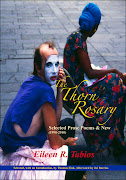there was BABAYLAN POETICS. Here's a
new Babaylan video featuring timeless intellectual Leny M. Strobel. What's interesting, among many things, is how the video opens. It features Virgil Mayor Apostol (of the infamous
FART) opening up one of the events during the Babaylan Conference a few months ago. Specifically, he is talking in Ilokano, saying "Bari, bari" which can be literally translated as "Go away."
But it's not an aggressive order for anyone to move away. The chant is more of a charm to drive away unwanted spirits, while allowing benevolent ones to remain. As Virgil explained to me, "This goes back to how our ancestors feared the malevolent spirits, thus much prayers and offerings going to them, rather than the good ones since they did no harm. Therefore, the focus on the chant for the opening is for the purification of the space, and everyone within."
Virgil adds, "The burning of anglem (cloth incense) is universal in northern Luzon, and used for various circumstances from the birth of a child, illness, to the death of an individual. With its inclusion in the opening ceremony, its purpose is to drive away these malevolent spirits."
Very interesting, and a helpful explanation to me since, when I first heard of the literal translation, I was struck by its use. That is, since the Babaylan is about community and inclusiveness, I found it interesting that this "Go away" is the opening. Mom said that the chant also refers to how, as we walk the earth, we are telling the spirits to move away so that we do not inadvertently step on them or otherwise harm them with our movements.
In the video opening, Virgil also goes on to say to the spirits, "We do not want anything from you..." I like that! My initial reaction was:
Well, how's that for anti-colonialism!These chants go ... deep (grin).
You know, ever since the Babaylan conference at Sonoma, I'd be walking about Galatea's mountain chanting, "Bari, Bari..."
Mom used to shush Moi, saying I'd actually bring the spirits here. Thing is, those spirits never left Moi. Blood memory and all that. Wink.






